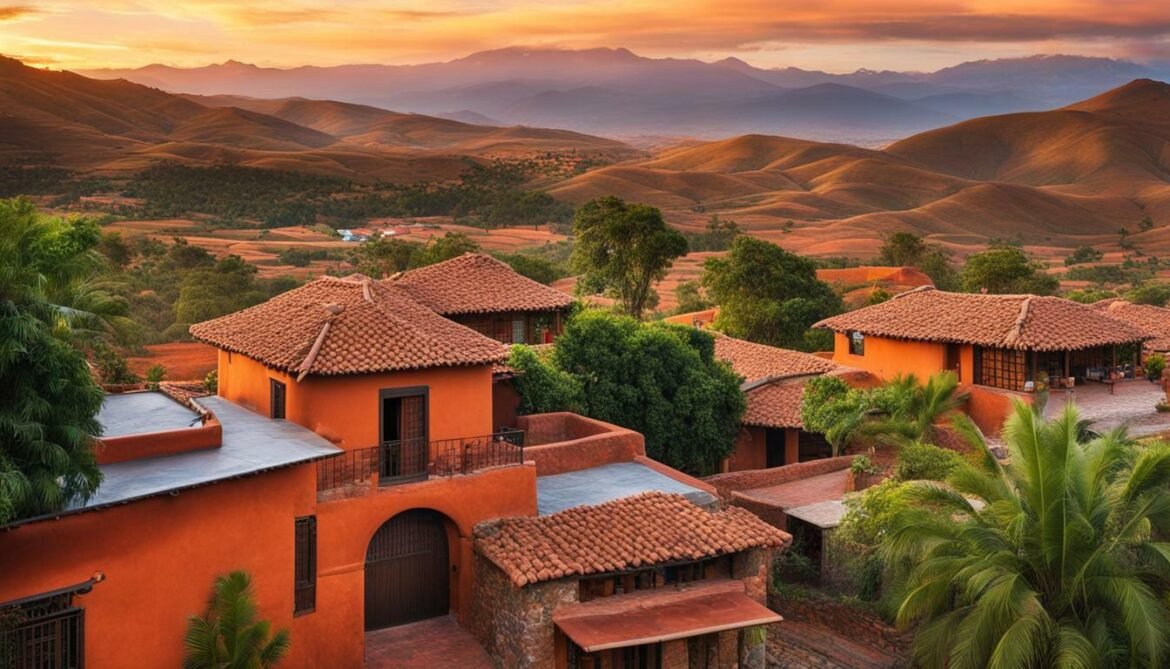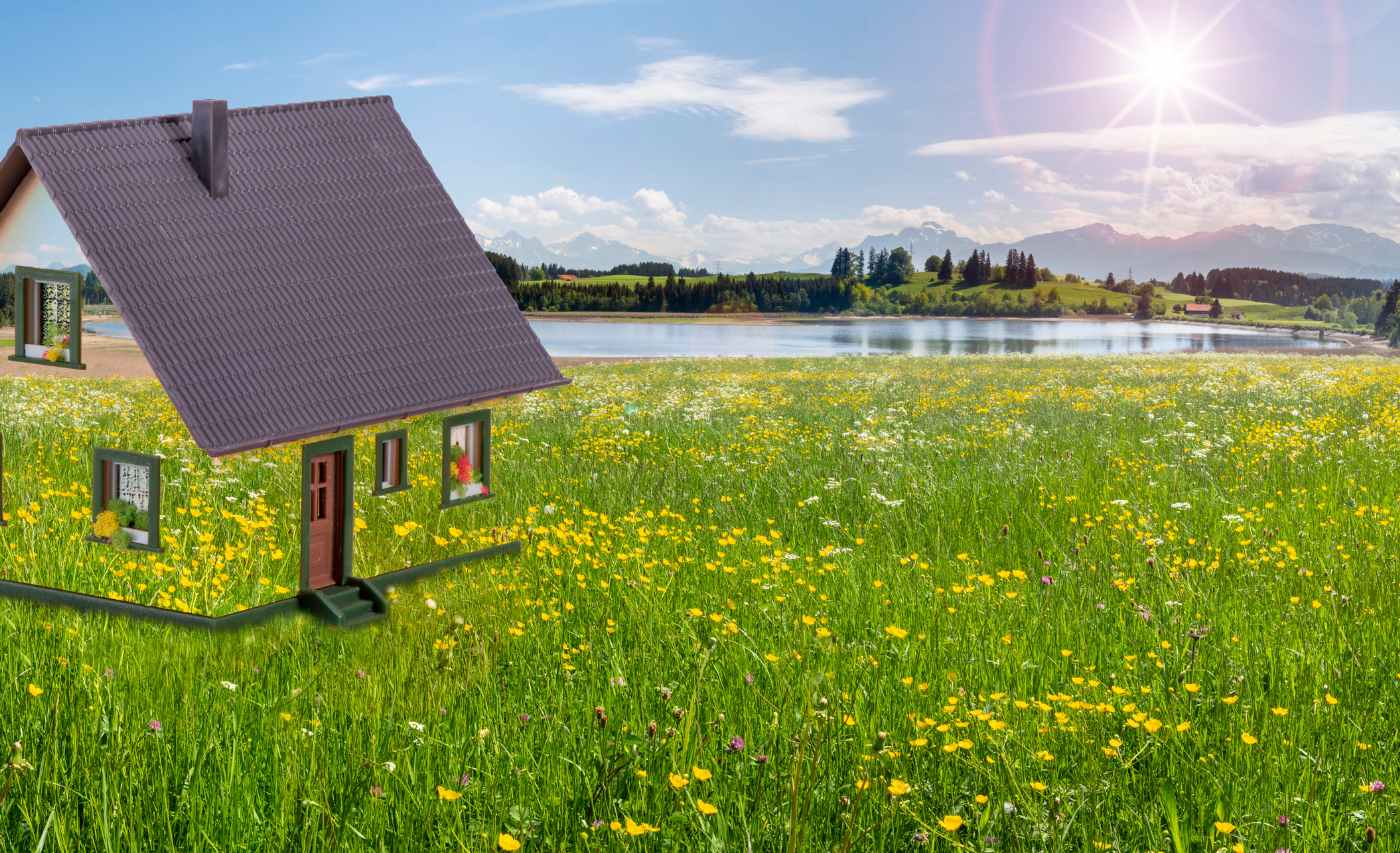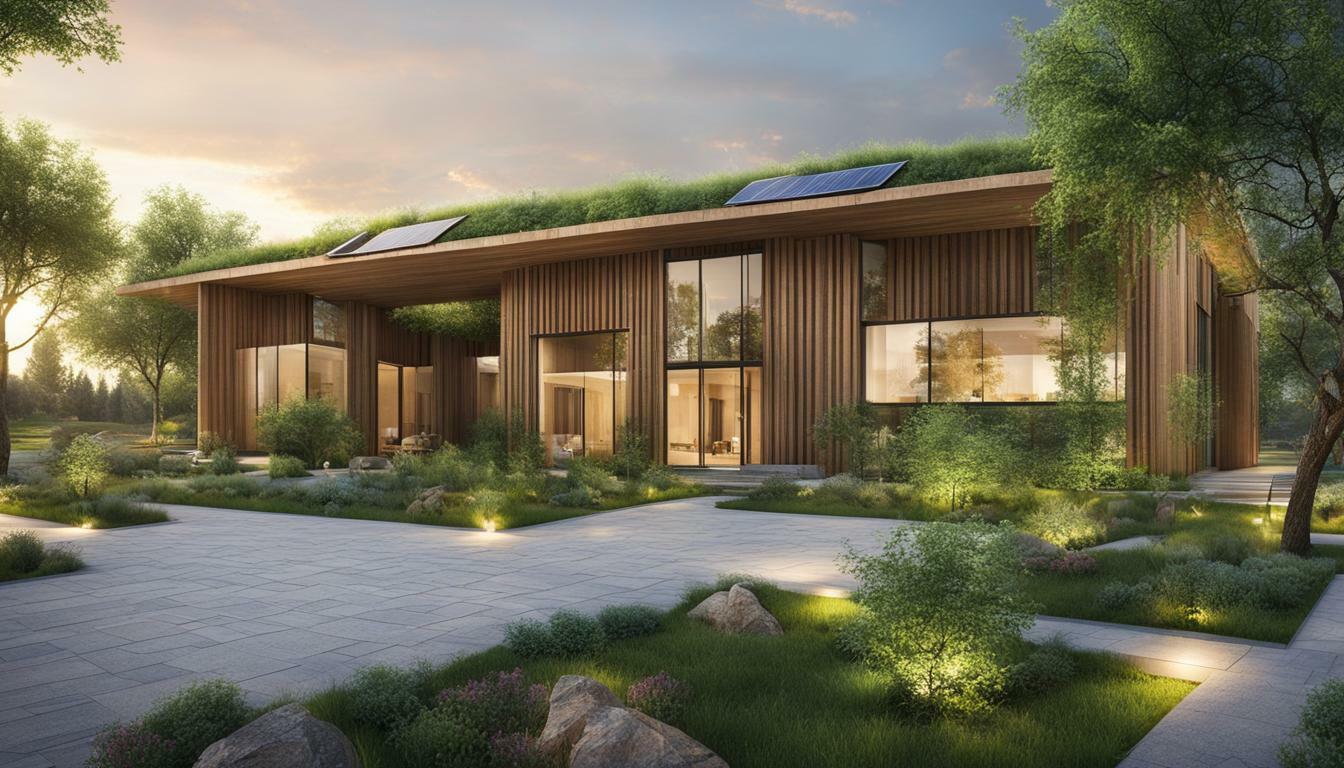Green Building Bolivia ♥ A Short Guide
Bolivia, a landlocked country in South America, is renowned for its stunning natural beauty and rich cultural heritage. In recent times, Bolivia has emerged as a leader in implementing green building practices, which focus on environmentally friendly and sustainable construction methods. With its diverse ecological regions, Bolivia offers a unique landscape to explore and implement these practices. In Green Building Bolivia | A Short Guide, you will learn quickly about the current state of play in beautiful Bolivia for green building and related topics.
A World Bank article of April 2019, Building Sustainable Cities in Bolivia, sets part of the backdrop to Bolivia today.
The Bolivia Urban Infrastructure Project addresses the nation’s increasing urbanization and the needs of low-income residents in three major cities. This project enhanced mobility in the city of El Alto by constructing routes and sidewalks, benefiting 197,000 people living in high traffic areas. In addition, more than 28,000 people in La Paz benefited from improved access to basic services and infrastructure, and in Santa Cruz more than 34,000 people were connected to the sewerage network.
Key Takeaways:
- Green building practices aim to create sustainable and environmentally friendly structures that minimize resource consumption and reduce the carbon footprint.
- Bolivia incorporates a range of green building practices, including the use of renewable materials, energy-efficient technologies, water conservation methods, and preservation of biodiversity.
- By implementing these practices, Bolivia is paving the way for a greener future in the construction industry.
Emphasis on Renewable Energy
One of the key aspects of green building in Bolivia is the incorporation of renewable energy sources. With the increasing awareness of climate change and the need to reduce greenhouse gas emissions, there has been a growing emphasis on transitioning from fossil fuels to clean and sustainable forms of energy.
Renewable energy sources include solar power, wind turbines, and hydropower, among others. In Bolivia, solar power has become a popular renewable energy option due to the country’s high altitude and abundant sunlight. Wind turbines are also being implemented in various parts of Bolivia, including in the high plains and the windy regions of the country’s southeast.
One of the main advantages of renewable energy is that it produces little to no emissions, unlike fossil fuels that contribute to air pollution and climate change. By incorporating renewable energy sources, green buildings in Bolivia are able to reduce their carbon footprint and contribute to a more sustainable future.
In addition to the environmental benefits, there are also economic advantages to the emphasis on renewable energy. The renewable energy sector has been rapidly growing in Bolivia in recent years, with investments and job opportunities expanding. The shift towards renewable energy sources creates new employment opportunities and drives economic development, contributing to Bolivia’s sustainable future.
The emphasis on renewable energy also aligns with international climate targets, such as the Paris Agreement, which outlines a clear target for reducing greenhouse gas emissions and transitioning to a low-carbon future. By prioritising renewable energy, Bolivia can make significant progress towards meeting its climate targets and ensuring a sustainable future for generations to come.

“The transition to renewable energy is crucial in reducing greenhouse gas emissions, protecting the environment, and building a sustainable future for all.”
In summary, the incorporation of renewable energy sources in green building practices in Bolivia is a key aspect of promoting sustainability. With its environmental, economic, and social benefits, the shift towards renewable energy is crucial in mitigating climate change, driving economic growth, and building a more sustainable future.
Sustainable Materials
Another significant aspect of green building practices in Bolivia is the use of sustainable materials. These materials are environmentally-friendly and promote long-term ecological balance. They are responsibly sourced and manufactured with consideration for their entire lifecycle, from extraction to disposal.
One example of sustainable materials is bamboo. It is a fast-growing grass that can be harvested and regrown in a relatively short period of time. Bamboo is known for its strength, versatility, and being highly sustainable because it requires minimal water and fertilizer. Additionally, it absorbs more carbon dioxide and produces more oxygen than other trees. That makes it an excellent choice for a wide range of applications, from construction to textiles.
Cork is another sustainable material that is derived from the bark of the cork oak tree. This type of tree is harvested without causing any harm to it. Cork is a renewable resource, as the bark regenerates and can be harvested every 9 to 12 years. Besides, it is lightweight, flexible, and has excellent insulating properties. As a result, it is an ideal choice for flooring, insulation, and even fashion accessories.
Recycled materials also play a significant role in sustainable manufacturing. Recycled plastic, glass, and metal can be transformed into new products, reducing the need for virgin resources and minimizing waste. For instance, recycled plastics can be made into durable outdoor furniture, while recycled glass can be used to create beautiful and unique countertops.
Moreover, bio-based materials derived from renewable sources such as plants and agricultural waste are increasingly gaining popularity. These materials have the potential to replace traditional materials like wood, plastic, and concrete. Bio-based polymers made from corn or sugarcane are being used, for example, to create biodegradable packaging and disposable cutlery.
Sustainable materials offer an environmentally-friendly alternative to conventional materials. They help reduce pollution, conserve natural resources, and create a more sustainable future. By incorporating sustainable materials in green building practices in Bolivia, the country is contributing to the global efforts to protect the planet.

Passive Design Strategies
Green buildings in Bolivia are designed with careful consideration of local climate conditions. One of the most important aspects of green building practices is the use of passive design strategies. These strategies enable buildings to be more energy-efficient and comfortable without relying on mechanical systems. Passive design strategies involve utilizing natural resources to create a sustainable and comfortable indoor environment.
One crucial passive design strategy is proper orientation and placement of the building. By aligning windows and openings to maximize solar gain in the winter and reduce heat gain in the summer, buildings can reduce their reliance on heating and cooling systems. This approach can significantly reduce energy consumption while improving indoor comfort levels.
Effective insulation is another critical aspect of passive design. Well-insulated buildings can prevent heat transfer between indoor and outdoor environments, leading to better temperature control and reduced energy use. This technique is essential in Bolivia’s harsh climate conditions, where maintaining a consistent indoor temperature is integral to occupant comfort.
Passive cooling techniques, such as natural ventilation, are also commonly used in passive design. By strategically placing windows and vents, buildings can promote effective airflow and decrease the need for air conditioning. In warmer climates, natural ventilation can help manage indoor temperatures, providing a cool and comfortable indoor environment.
Another passive design strategy is incorporating thermal mass. Materials with high thermal mass, such as concrete or stone, can absorb and store heat, releasing it when temperatures drop. This technique can significantly reduce reliance on external heating sources while maintaining a consistent indoor temperature.
Passive solar design is a specific approach to passive design strategies that focuses on optimizing solar gain and minimizing heat loss. This involves utilizing elements such as solar panels, shading devices, and reflective surfaces to harness sunlight and control its impact on the indoor environment. This technique is particularly useful in Bolivia, where solar energy can be harnessed to reduce energy consumption while maintaining comfortable indoor temperatures.
Overall, passive design strategies offer a sustainable and energy-efficient approach to building design. By harnessing natural resources and employing smart design techniques, buildings can reduce their environmental footprint and provide comfortable indoor spaces for occupants. Passive design is an integral aspect of green building practices in Bolivia, providing a template for sustainable building practices worldwide.

Water Conservation
Bolivia faces water scarcity, especially during the dry season. Therefore, water conservation is a crucial issue, and it plays a significant role in green building practices in Bolivia. Various methods can be used to conserve water, such as rainwater harvesting, greywater recycling, and sustainable water management.
One of the most effective methods of water conservation is rainwater harvesting, which involves collecting rainwater from roofs, gutters, and other surfaces and storing it in tanks or other containers. This water can then be used for non-potable purposes like watering plants, flushing toilets, and cleaning.
Another method is greywater recycling, which involves reusing wastewater from sinks, showers, and washing machines for irrigation purposes. Through this method, the amount of water discharged into sewage systems can be reduced significantly, and the water can be used more efficiently.
In addition to these methods, sustainable water management practices can also be implemented to minimize water waste. These include leak detection and repair, water-efficient irrigation systems, and drought-resistant landscaping.
Implementation of such water conservation practices can significantly reduce the water consumption of buildings and ultimately save on the cost of water bills. Moreover, reduction in water usage also helps to reduce energy consumption and greenhouse gas emissions. (Tramadol)
Overall, water conservation is a crucial part of green building practices in Bolivia, and with collective efforts towards water conservation, we can ensure a sustainable future for generations to come.

Green Roofs and Vertical Gardens
Green roofs and vertical gardens are gaining popularity in Bolivia as innovative green building practices. A green roof is a roof that is partially or completely covered with vegetation, while a vertical garden involves growing plants vertically on a wall or other structure. These green infrastructures offer a range of benefits, including improved air quality, reduced energy consumption, and enhanced biodiversity in urban areas.
Green roofs provide insulation, reducing the energy needed for heating and cooling buildings. They also absorb rainwater, reducing runoff and alleviating pressure on urban drainage systems. Additionally, they enhance air quality by trapping dust and pollutants and helping to mitigate the urban heat island effect. Green roofs also create additional green spaces in cities, providing opportunities for recreation and relaxation.
Vertical gardens, on the other hand, have a smaller footprint and can be a practical solution for densely populated areas with limited space. They can improve air quality by capturing carbon dioxide and releasing oxygen, and also provide shade and reduce the ambient temperature. Vertical gardens can increase biodiversity by attracting birds, insects, and other wildlife, creating a more sustainable and eco-friendly urban environment.
Both green roofs and vertical gardens have aesthetic benefits, adding beauty and enhancing the visual appeal of buildings and landscapes. They can also contribute to the overall well-being of urban dwellers by creating tranquil and peaceful settings amidst the hustle and bustle of city life.
Despite their numerous advantages, there are also challenges associated with green roofs and vertical gardens. Maintenance and irrigation are crucial factors to ensure the survival and health of the plants. Proper planning and design, including appropriate plant selection and irrigation systems, are essential for their long-term success. Cost can also be a barrier, as the initial investment for installing and maintaining these green infrastructures can be higher than traditional roofs or walls.

Both green roofs and vertical gardens have the potential to transform the way we think about and design cities, by integrating nature into the built environment.
In conclusion, Green Roofs and Vertical Gardens offer a range of environmental, social, and economic benefits in urban areas. They have the potential to transform the way we think about and design cities, by integrating nature into the built environment. By implementing these innovative solutions, we can create more sustainable, resilient, and livable urban spaces, while also mitigating the impacts of climate change.
Integrating Traditional and Modern Architecture
Green building practices in Bolivia seamlessly blend traditional and modern architecture. This approach creates stunning designs that showcase the richness of Bolivia’s cultural heritage while embracing the advancements of modern technology.
One way to achieve this integration is by using traditional materials in modern structures. Natural stone or timber elements add warmth and character to contemporary buildings, creating an intriguing contrast that adds depth to the architectural composition.
Architects can also incorporate traditional design elements into modern structures, such as arches, columns, or decorative mouldings. By doing so, they pay homage to the past while creating buildings that are both relevant and appealing to today’s aesthetic preferences.
Integrating traditional and modern architecture extends beyond the physical aspects of design. It also involves considering the cultural and historical context of the site. By understanding local traditions and architectural styles, architects can create designs that are sensitive to the existing context, ensuring that the new structures complement their surroundings while showcasing innovation and modernity.
However, this approach poses challenges. Architects must strike a balance between preserving the historical integrity of older structures and incorporating contemporary design elements, requiring a thoughtful and careful approach to ensure that the new additions do not overpower or diminish the significance of the existing architecture.
In conclusion, integrating traditional and modern architecture offers a unique opportunity to create visually stunning designs that pay homage to the past while embracing the advancements of the present. This approach adds depth and character to the design, creating spaces that are functional and relevant to today’s needs and preferences.

Government Support and Policies
The Bolivian government is actively supporting and promoting green building practices. The government has implemented policies that incentivize and regulate sustainable construction practices, making Bolivia a leader in eco-friendly architecture in South America.
The government has provided financial aid and tax incentives to promote the use of green materials and renewable energy solutions in construction. Additionally, regulations have been put in place to ensure that buildings meet certain energy efficiency standards, reducing their environmental impact.
Sustainable development is a key priority for the Bolivian government. They have implemented policies aimed at reducing deforestation and promoting sustainable land use practices. The government has also encouraged the use of sustainable transportation methods, such as cycling and public transit, to reduce carbon emissions.
Moreover, the government has established partnerships with international organizations and NGOs to promote sustainable development and green building practices in Bolivia. For instance, the government has worked with the United Nations Development Programme (UNDP) to implement sustainable development projects and increase awareness of eco-friendly architecture.
The Bolivian government’s commitment to promoting green building practices and sustainable development has not only benefited the environment but has also contributed to social and economic development. Through government support and policies, Bolivia is creating a sustainable future for its citizens and inspiring other countries to do the same.

Benefits of Green Buildings
Green buildings in Bolivia offer numerous benefits for both the environment and the occupants. One of the key advantages of green buildings is their energy efficiency. These buildings are designed to reduce energy consumption through the use of renewable energy sources and energy-efficient systems, resulting in significant cost savings for building owners in terms of energy bills and reducing greenhouse gas emissions.
Green buildings also promote improved air quality by utilizing technologies like efficient air filtration systems and natural ventilation which ensures indoor air is clean and free from pollutants. This is particularly beneficial for individuals with respiratory conditions or allergies, as it helps to create a healthier living environment.
In addition, green buildings prioritize water conservation by incorporating systems such as rainwater harvesting and greywater recycling. This reduces dependency on freshwater supply, conserves water, and reduces the strain on public water resources.
Another advantage of green buildings is their positive impact on occupant well-being. These buildings are designed to prioritize occupant comfort and health by incorporating features such as natural lighting, green spaces, and ergonomic design – improving productivity, reducing stress, and enhancing overall well-being.
Green buildings also have a positive effect on the local community and the environment. Sustainable materials and technologies reduce waste and minimize the depletion of natural resources. They also contribute to the reduction of urban heat island effects and improve insulation while reducing heat absorption, creating a more sustainable and livable environment for both building occupants and the surrounding community.
Investing in green buildings is a prudent choice for both individuals and businesses looking to reduce their environmental impact and create healthier living and working spaces. As the demand for more sustainable and eco-friendly buildings continues to grow, the benefits of green buildings will only continue to increase for the environment and the occupants.

The Future of Green Building in Bolivia
Bolivia’s commitment to green building practices is paving the way for a sustainable future. The country is making significant efforts to promote sustainable construction practices, recognizing the importance of reducing carbon emissions and addressing climate change.
The government of Bolivia has launched various initiatives to encourage the construction industry to adopt greener practices. One such initiative is the Green Building Council, which works towards promoting sustainability in the construction sector. The council provides guidance and certification to buildings that meet sustainable criteria, including energy efficiency, water conservation, and the use of eco-friendly materials.
Bolivia’s commitment to green building is also reflected in its legislation. The country has enacted laws and regulations that require new buildings to comply with sustainability standards. This includes the use of renewable energy sources, such as solar power and wind turbines, as well as the implementation of energy-efficient design and construction techniques.
The future of green building in Bolivia also looks promising due to the availability of renewable resources in the country. Bolivia has abundant sources of solar, wind, and hydroelectric power, which can be harnessed to meet the energy needs of green buildings. Additionally, the country has rich biodiversity and a vast forest cover, which provides ample opportunities for sustainable building materials, such as bamboo and reclaimed wood.
The construction industry in Bolivia is gradually embracing green building practices. More architects, engineers, and developers are incorporating sustainable design principles into their projects. They are exploring innovative technologies and construction methods that minimize waste, optimize energy consumption, and reduce environmental impact.
The future of green building in Bolivia also presents economic opportunities. The demand for sustainable buildings is growing globally, and Bolivia can tap into this market by exporting its expertise in green construction practices. This can contribute to economic growth, job creation, and the development of a sustainable construction industry in the country.

In conclusion, the future of green building in Bolivia is promising. With the government’s support, the adoption of sustainable practices, and the availability of renewable resources, the country is well-positioned to develop a thriving green building sector. The benefits of green building, including reduced carbon emissions, energy efficiency, and the use of eco-friendly materials, make it an attractive choice for both the environment and the economy.
Conclusion
Bolivia’s commitment to green building practices is commendable, showcasing its dedication to preserving its natural beauty and mitigating the impacts of climate change. By incorporating renewable energy sources, sustainable materials, and passive design strategies, Bolivia’s architects and builders are leading the way in environmentally friendly building techniques.
The emphasis on water conservation and the use of green roofs and vertical gardens also demonstrate Bolivia’s commitment to sustainable development and urban landscape design. Furthermore, the integration of traditional and modern architecture in green buildings showcases the country’s ability to blend tradition and innovation.
The government’s support and policies that promote green building practices further reinforce Bolivia’s commitment to sustainable construction. The benefits of green buildings, including carbon footprint reduction and a positive impact on the environment, are undeniable.
As Bolivia continues to prioritize sustainable design and construction, it has the potential to inspire other countries to do the same. The future of green building in Bolivia is bright, and the country’s efforts in this area demonstrate its dedication to building a sustainable future.
In conclusion, Bolivia’s commitment to green building practices, renewable energy solutions, and sustainable design is a shining example of the country’s dedication to preserving its natural beauty and mitigating the impacts of climate change. The innovative and environmentally friendly building techniques being employed in Bolivia have the potential to inspire sustainable development worldwide.
FAQ
Q: What are the key aspects of green building in Bolivia?
A: The key aspects of green building in Bolivia include emphasis on renewable energy, use of sustainable materials, passive design strategies, water conservation, and the incorporation of green roofs and vertical gardens.
Q: What renewable energy sources are being utilized in green buildings in Bolivia?
A: Solar power through the installation of solar panels and wind turbines are the main renewable energy sources being utilized in green buildings in Bolivia.
Q: What sustainable materials are being used in green building practices in Bolivia?
A: Sustainable materials such as adobe, bamboo, wood, and stone are being widely used in green building practices in Bolivia.
Q: How are passive design strategies implemented in green buildings in Bolivia?
A: Passive design strategies such as shading devices, high-performance windows, natural ventilation systems, and optimizing building orientation are used to maximize energy efficiency in green buildings in Bolivia.
Q: How does Bolivia emphasize water conservation in green building practices?
A: Bolivia emphasizes water conservation through the installation of rainwater harvesting systems and greywater recycling systems in green buildings.
Q: What are the environmental benefits of green roofs and vertical gardens in Bolivia?
A: Green roofs and vertical gardens in Bolivia help regulate indoor temperature, reduce stormwater runoff, improve air quality, reduce heat gain, and enhance biodiversity in urban areas.
Q: How does Bolivia integrate traditional and modern architecture in green buildings?
A: Bolivia integrates traditional and modern architecture by reviving traditional construction methods and blending them with innovative design techniques in green buildings.
Q: What government support and policies are in place to promote green building practices in Bolivia?
A: The government of Bolivia provides support and has implemented policies that encourage and promote green building practices and sustainable development.
Q: What are the benefits of green buildings in Bolivia?
A: Green buildings in Bolivia have multiple benefits, including the reduction of carbon footprint, energy efficiency, and minimizing environmental impact.
Q: What does the future hold for green building in Bolivia?
A: The future of green building in Bolivia looks promising, and it has the potential to inspire other countries to embrace sustainable construction for a brighter and greener future.
You may like to read about the UN’s plan to cut emissions in the built environment sectors.








